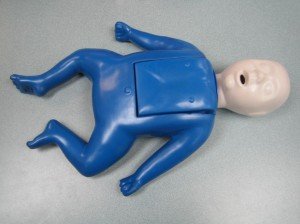Fever is not an illness but an indication of a health issue but can be beneficial in fighting off an infection. A fever is considered high if it reaches 103.6 degrees Fahrenheit or higher. In some infants, a high fever can cause a rapid heart rate, irritability, dehydration, increased breathing rate and febrile seizures. Even though febrile seizures are considered by many as scary, they are not serious and could not cause any lasting damage. Basic first aid measures can be given to control the fever, but if it persists, consult a doctor.
Causes of high fever
It is a known fact that infants typically have higher temperatures than the older children. The temperature is usually higher during late afternoon and evening and goes down between midnight and early in the morning. This simply means that if the infant has a fever, his/her temperature has the tendency to spike up in the afternoon. The usual causes of fever include ear infections, severe cases of colds, flu, sore throat and respiratory conditions such as pneumonia. Other conditions such as urinary tract infections and even meningitis can also cause fever.
Dehydration

Even though an infant with high fever can become irritable and have an increased heart and breathing rate, a serious side effect of high fever is dehydration. Once an infant has fever, it increases his/her needs for fluids and if the body does not receive enough, he/she can end up dehydrated.
The indications of dehydration include dark, strong-smelling urine, dry diaper for more than 6 hours, crying without tears, dry lips and mouth as well as lethargy. The ideal way to prevent dehydration is to ensure that the infant with high fever drinks a lot of fluids. If the infant is 4 months or older, you can provide him/her with 4 oz. of water in addition to the milk.
Febrile seizure
Always remember that a high fever can result to febrile seizures among children between 6 months and 5 years old. This type of seizure usually runs in families and occurs during the first few hours of an illness. During a febrile seizure, the infant appears different for several minutes such as having a blank stare. The child can twitch, stiffen and roll his/her eyes and followed by a period of unresponsiveness. Always remember that this type of seizure can last for a few seconds up to a minute. It can even last for several minutes, but in rare cases. This must be reported to a doctor right away even though these episodes are rarely serious.
When to consult a doctor
It is important to bring a child with high fever to a doctor as soon as possible. Always remember that a fever can have various causes and it can means that the infant is struggling with an illness that can be diagnosed and treated by the doctor. Before a doctor is consulted with an infant who has high fever, you have to ask ways on how to reduce the fever with ibuprofen or acetaminophen to make him/her comfortable as well as reduce the risk for potential side effects.
